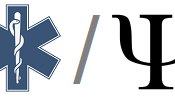Why do you get butterflies in your stomach before a first date? Why does your heart pound when you're in danger or in trouble? Everybody knows what it's like to feel anxious. Anxiety, in general, helps people cope with certain situations. But if you have an anxiety disorder, this normally helpful emotion does the complete opposite. It can keep you from copping and can disrupt your daily life. Anxiety disorders are the most common of all the mental disorders.
According to Psychiatrists anxiety is divided up into three main types: general anxiety, phobias, and panic disorders. Six months or more of chronic worry and tension characterizes general anxiety disorder (GAD). People with this disorder usually expect the worst, even if there is no sign of trouble. They are unable to relax and often suffer from insomnia. Not only are the symptoms mental, but physical also. Suffers experience fatigue, trembling, muscle tension, headaches, irritability, or hot flashes.
Phobias are persistent, irrational fears of certain objects or situations. They are either a specific phobia or a social phobia, such as a particular object or a fear of embarrassment in public setting. Because of their fear of an object or situation, people are often so overwhelmed by their anxiety they avoid contact with their phobia.
Intense fears that often, without warning, repeat themselves are panic disorders. Those fears are usually accompanied by physical symptoms that may include chest pains, heart palpitations, shortness of breath, dizziness, or abdominal distress. Many people suffering from a panic disorder develop intense anxiety between episodes, worrying when and where the next one will strike them.
Reference Page Anxiety Disorders. National Institute if Mental Health. Retrieved November 26, 2001 from the World Wide Web: http://www.nimh.nih.gov/anxiety/anxiety/


